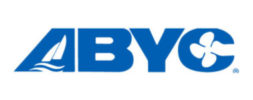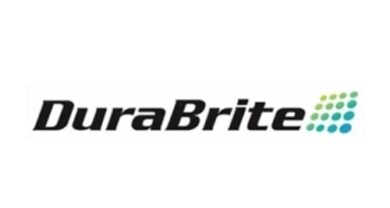From foe to friend
West Marine is a tough competitor.
BoatU.S. knows that well. Up until 2003, West Marine was its retail division’s No. 1 foe.
Then BoatU.S. did an about face, selling its retail stores to West Marine and forming a partnership with the retail chain to increase
membership.
“It’s the best partnership in the marine industry today, hands down,” says Jim Ellis, president of BoatU.S. “Becoming a partner with West Marine was like that moment when Darth Vader says, ‘Luke, I am your father.’ You suddenly realize that this person who you thought was your enemy may not be. It was a very clarifying time for us and actually has worked beautifully.”
Now, the association is healthier than ever, growing at a pace it hasn’t enjoyed in many years (See graph, opposite page) and looking for avenues to serve a wider range of members. While BoatU.S. once was stuck at about 500,000 members, its founder’s dream of 1,000,000 members is now an obtainable goal — and one for which there is a growing need as the association attempts to fight for boater’s rights on a federal, state and local level.
“What matters to politicians are numbers,” Ellis states. “When I can go to any given congressman and say, ‘Hello, Mr. Congressman. Do you know we have 12,000 members in your district?” then my voice representing boaters making a difference.”
West Marine isn’t the only source from which BoatU.S. is expecting to generate new members, however. The association is also reaching out to dealers and marina operators in hopes of appealing to a larger percentage of trailerable boat owners.
BoatU.S. began as a consumer advocacy group, but under the umbrella brand also lies an insurance business, a towing business, a travel group, a boat finance operation, and a boating safety and education foundation.
Because many of the association’s members join BoatU.S. to get access to one of its services, like towing, and those most likely to feel they need a towing service own ocean-going vessels, the typical BoatU.S. member lives near the coast and owns a fairly large boat. A big part of its future, though, consists of smaller boat owners in inland regions. The association now believes trailerable boat owners are more likely to see the need for both the company’s paid services and for its other roles, like government affairs.
“Today, most people figure they can’t exist past their slip without a GPS and a depth-finder, and they only have so little opportunity for boating that they want a towing service to basically give them peace of mind in case they break down,” Ellis explains.
He adds that as government affairs has moved from the federal arena to the state and local level, it has become a growing issue for boaters of all sizes.
To get access to those inland boaters, BoatU.S. is hoping to partner with inland marina operators and dealers, big and small, and their manufacturer partners. Dealers who would like to offer BoatU.S. memberships to boat buyers, for example, can get volume discounts. In addition, the requirements have been reduced for those inland marinas who might like to become a TowBoatU.S. or Vessel Assist operation. BoatU.S. has also partnered with some boat builders to offer memberships as part of their boat packages.
A challenge the association faces, however, is what it calls a misunderstanding among much of the industry about BoatU.S. and its mission.
“I think a lot of the industry looks at our consumerism and is very skeptical,” says Ellis. “But we don’t use our consumer weight in the public frivolously. We understand that it can have a serious impact and smacking a manufacturer around, unless you’re absolutely sure that is the only course you have to take, is not a good thing to do. It’s not necessarily good for the consumer. And that’s what we’re about — what’s good for the consumer.”
He explains that BoatU.S. actually publishes a small fraction of the boat and boating product problems it uncovers. Many times, it is able to work out a deal with the manufacturer in which it agrees to take care of the problem and its customers.
The good news is that it seems fewer deals are ahead for the industry. Ellis acknowledges that change is afoot, which signals a promising future for boaters, the industry and BoatU.S., as it forms closer relationships with both groups.
“Good dealers and good manufacturers — and now I think that’s the majority of them — are moving down the road to basically make this a very customer-centered, customer-focused industry.”
Sidebar: What’s in a name?
The signage on the vast majority of former BoatU.S. stores is just now being converted to the West Marine name, something with which BoatU.S. is, surprisingly, OK.
Though BoatU.S. sold its retail stores to West Marine in 2003, the signs in front of most of them still held the BoatU.S. brand — until earlier this year.
You might think the name change would upset BoatU.S., but that’s not the case, according to BoatU.S. President Jim Ellis.
He says that when West Marine CEO Peter Harris told the association of the planned change, “our approach to it was, ‘How can we help you make that happen?’”
After years of slowly transitioning the interior of the former BoatU.S. stores over to the West Marine format and brand, the change of the signs out front is mostly a formality, suggests Bruce Edwards, senior vice president of stores for West Marine.
What it comes down to is that BoatU.S. trusts West Marine and, as its business partner, believes the more successful West Marine is, the better it will be able to deliver on its end of the deal.”
“By becoming a BoatU.S. member, you’ll get a better price there than anyone else,” says Ellis. “You’re going to get your rewards certificate — that’s your discount going forward. To me, that’s the magic in it. Is there going to be some people disappointed? Yeah. Sure. But you’ve got to end up doing the best thing for the membership across the country.”
The name change is expected to help West Marine save marketing dollars and simplify its inventory system, which translates into better prices and more selection for customers — many of which are BoatU.S. members.
“Frankly, as a boater myself, I walk into the store, I want to pick up as much of what I have on my list as possible,” explains Ellis. “I want it there. And I want it at the best possible price.” — Liz Walz
Sidebar: Problem solved
By making friends with its No. 1 competitor, both BoatU.S. and West Marine were able to achieve the growth they desired.
It was a new century, and BoatU.S. had a problem.
The boater owners association entered the boating equipment business in 1966 in response to its members’ lack of retail options. At that time, boating equipment was only available from local marinas and chandleries, where the selection was often limited and pricing was all over the board. That is, if you had a marina or chandlery nearby.
But by 2000, a number of competitors had popped up, from mail order and the Web to retail stores, and it was having trouble competing with bigger operations that had more cash.
“We weren’t retailers,” explains BoatU.S. President Jim Ellis. “We were truly association people who were starting up this business. As we got into this, the industry for retail equipment started to mature around us. We were faced with the fact that the retail equipment business had become a real serious, sophisticated business that kept requiring more and more resources.”
Its No. 1 competitor was West Marine, which gained the capital for rapid expansion when it went public. Meanwhile, BoatU.S. continued to grow at what Ellis describes as “a measured pace.”
The answer seemed clear. It was time for BoatU.S. to get out of the retail business. But complicating matters was the fact that the stores were delivering a steady stream of new members to the association.
That’s where the partnership with West Marine came in.
The two companies signed a marketing partnership through which BoatU.S. memberships would be sold not only in the 62 stores being purchased but in all West Marine-owned stores, numbering over 300.
In addition, West Marine pledged to deliver BoatU.S. members the highest possible rewards for shopping in their stores.
The results have exceeded expectations, according to Ellis, and will likely continue to drive membership growth for another 10 to 20 years. In 2005, for example, West Marine exceeded the membership goals outlined in the partnership by over 100 percent.
“Their research shows that the BoatU.S. member, the person that pays the money to be a member, spend more in their store per visit,” says Ellis. “If you’re running a set of stores and a certain kind of customer turns around and spends more, that’s the kind of customer you want to create more of.” — Liz Walz




